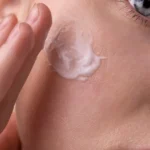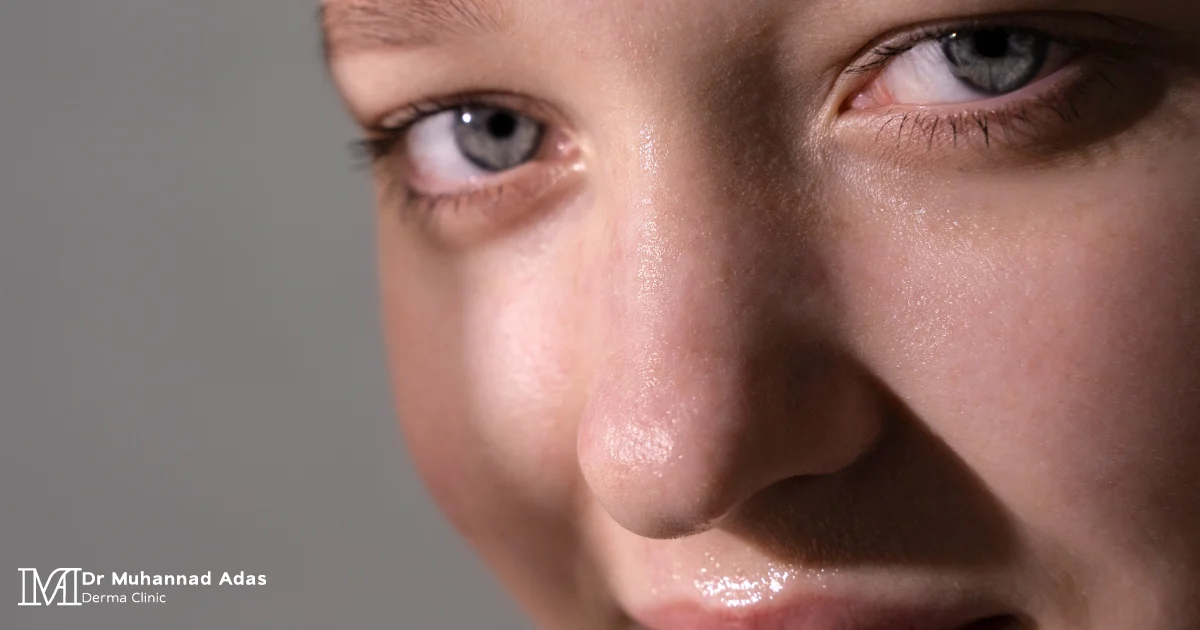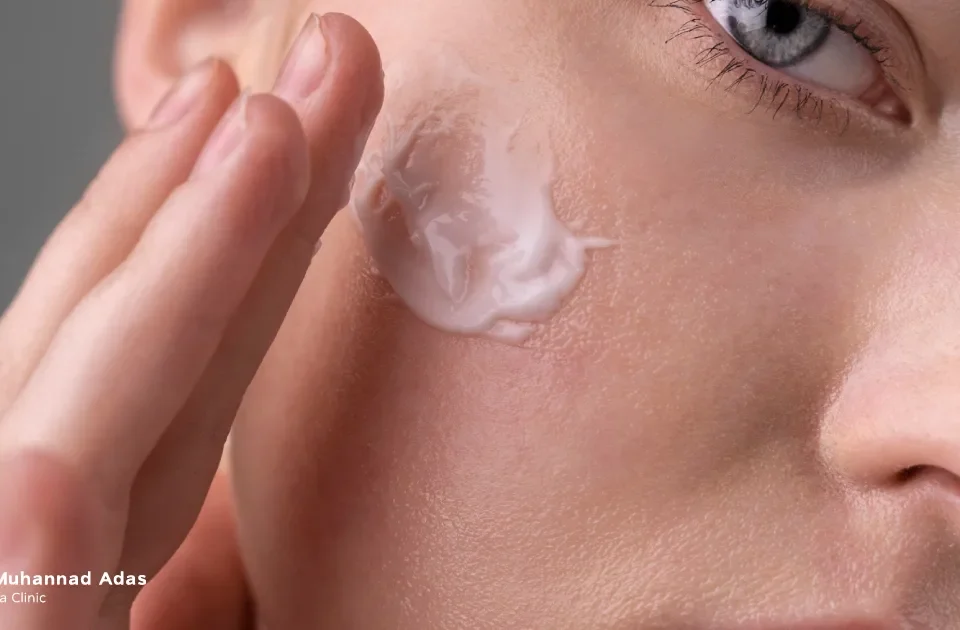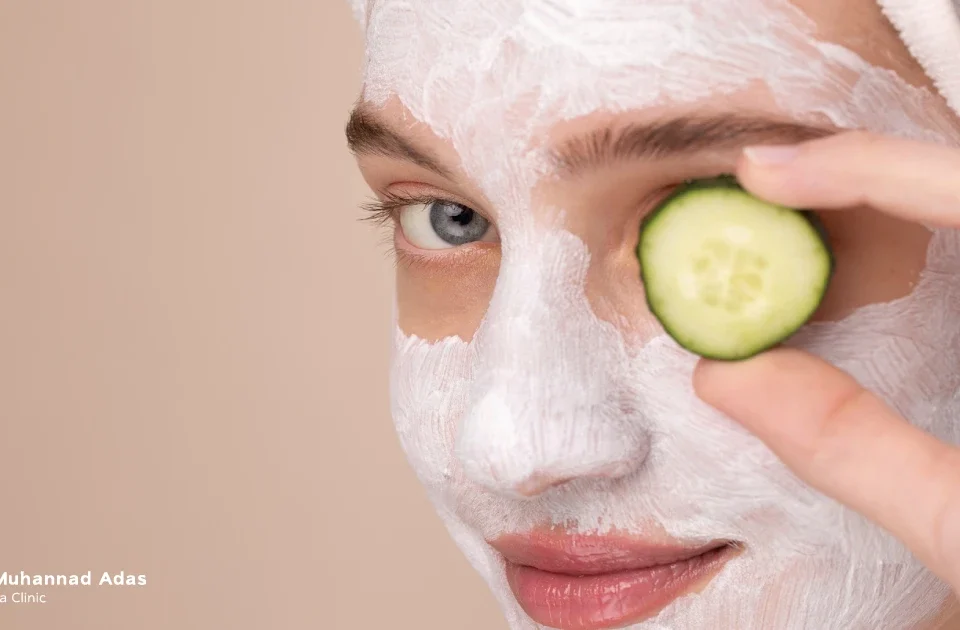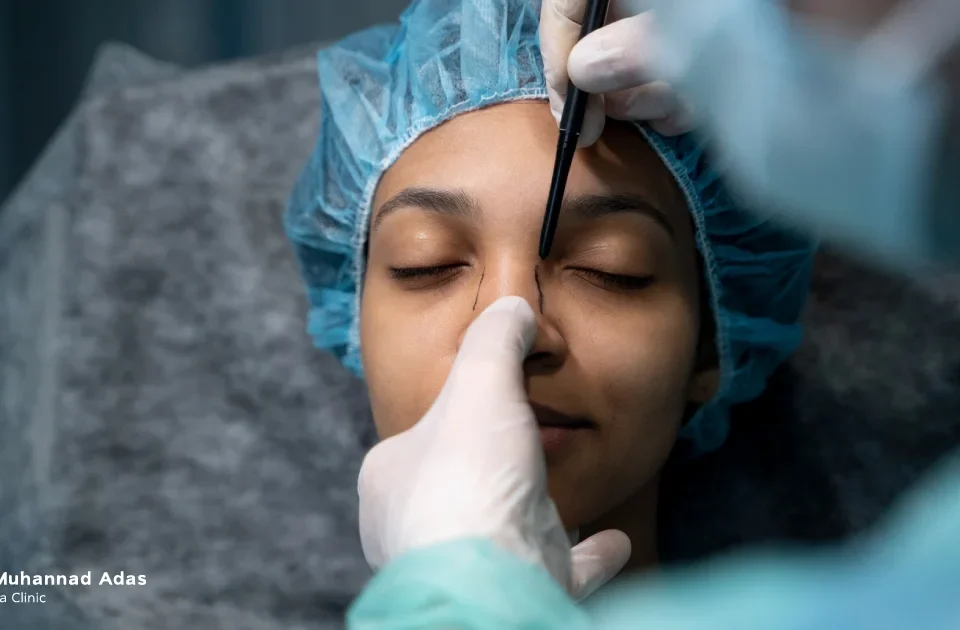Table of Contents
Are you suffering from annoying shine on your skin and excessive oil production? Are you tired of the appearance of large pores and acne? You are not alone! The issues mentioned above are among the most prominent symptoms and characteristics of oily skin. But have you considered the correct ways to manage it? Have you thought about the suitable ingredients for it? Continue reading for a comprehensive definition of oily skin, its causes, and treatments at home and in medical clinics. Let’s get started…
How to Determine if You Have Oily Skin?
You can use the blotting paper test or oil blotting sheets on your face, which are effective methods to measure if the skin is oily or not. Apply the blotting paper to different areas of your face to check the level of oil secretion in the skin. If the paper becomes saturated with oil, especially in the T-zone (forehead, nose, and chin), then you can be sure that you have oily skin.
What Do Individuals with Oily Skin Struggle from?
Individuals with oily skin experience various annoying symptoms that lead them to constantly seek solutions for treatment, such as:
- Visible and enlarged pores.
- Increased likelihood of acne and blemishes due to clogged pores and skin oils.
- Higher levels of oil secretion.
- Excessive shine on the skin, resulting from an imbalance between water & oil levels.
- Increased sweating of the skin.
- Skin inflammation.
- Oily hair.
- Thick and rough skin.
How Does Oily Skin Look Like?


Causes of Oily Skin
Internal causes
When noticing annoying effects & symptoms on the skin, it is essential to look deeply into the underlying internal causes to facilitate proper management & treatment, such as:
- Fatigue & stress, which stimulate the production of cortisol, leading to increased oil secretion.
- Poor diet, such as excessive sugar and fat intake, which can raise insulin levels and subsequently affect oil secretion in the skin.
- Using incorrect products.
- Genetic factors, as it is very likely to develop oily skin, especially if family members suffer from it.
- Excess natural oils.
- Hormonal changes, particularly during puberty.
- Certain medications, such as contraceptive pills & hormonal treatments that can affect the skin.
External causes
For external causes, they are factors that are beyond your control but significantly affect your skin’s health, include:
- Climatic factors, as hot and humid weather can stimulate the sebaceous glands and impact the skin.
- Over-washing & scrubbing the skin, which can lead to inflammation and exacerbate problems.
- Diet, where attention should be paid to certain types of foods, particularly those high in sugar and dairy.
- Excessive use of skincare products, so it is essential to consult a dermatologist about the products being used.
- Other environmental pollutants, which can stress the skin and trigger increased oil production.
Acne & Oily Skin
Individuals with oily skin suffer from clogged sebaceous glands, which in turn contribute to blocked pores and the development of acne. This issue is more bothersome than dangerous, as it can cause scarring and permanent marks on the skin, leading to discomfort and embarrassment for those affected.
Tips for dealing with acne externally
To manage acne, you should follow some instructions that will make its condition less impactful and reduce its appearance on the skin. Here are some the guidelines for dealing with acne caused by oily skin:
- Commit to regular cleansing twice a day with a suitable cleanser and water, using gentle motions on the skin.
- Use an antibacterial and cleansing wash, which can help minimize pore size and slow down the sebaceous glands’ oil production.
- Moisturize the skin, ensuring to use a moisturizer that is appropriate for oily skin and acne.
- Wash your hair frequently, as oily hair can contribute to clogged pores and increase the likelihood of acne.
- Consult a dermatologist for assistance in adapting to the nature of oily skin and treating its condition as much as possible.
Tips for dealing with acne internally
Consider the following tips to manage oily skin and acne internally, such as:
- Reduce the intake of sugars and sugary drinks, such as ice cream, sweets, cola, juices, and others.
- Limit the consumption of baked goods made with white flour.
- Cut down on nuts, as they contain fats and salt.
- Minimize dairy products and milk consumption.
Read also: Answering the Most Common Questions About Sensitive Skin
Oily Skin Treatment
Firstly, can oily skin or any skin type be treated? No! It is more about knowing the correct way to manage oily skin and different skin types to reduce the severity of its symptoms and prevent its condition from worsening, including:
Instructions to treat oily skin at home
Many dermatologists and beauty experts recommend following several guidelines for managing oily skin at home:
- Wash your face twice daily, in the morning and evening, and after any physical activity.
- Moisturize your skin regularly, preferably using a water-based moisturizer, especially one that contains natural ingredients.
- Use sunscreen when going outside.
- Choose products suitable for oily skin that are free from pore-clogging ingredients (non-comedogenic) and oils.
- Avoid excessive use of AHA and BHA exfoliants.
- Exercise regularly to help regulate hormones and manage stress levels.
- Avoid scrubbing or exfoliating the skin harshly; treat it gently.
- Remove makeup before bedtime.
- Avoid touching your face frequently throughout the day to prevent inflammation.
Oily skin treatment at medical & cosmetic clinics
What are the most prominent cosmetic procedures that can treat oily skin and alleviate its symptoms in medical & cosmetic clinics? Get to know them:
- Laser Treatment for Oily Skin, this procedure penetrates the skin layers to reach the sebaceous glands responsible for oil production. It helps reduce their size and regulates their function more effectively, promoting a more balanced and controlled oil production.
- Oral Medications, these are prescribed by a dermatologist.
- Botox Injections, botox can help reduce the symptoms of oily skin, acne, and enlarged pores. There are various types of Botox that your doctor may recommend.
- Consultation with a Dermatologist, It is essential to seek advice from a dermatologist for the most suitable treatment for oily skin, especially if symptoms worsen or do not improve despite following home care tips for oily skin.
Read also: Benefits of Fractional Laser for the Face: What Can It Do?
There’s no need to let your oily skin bother you. We understand the daily practices you undertake to maintain the balance of oils and fats in your skin. But! what if you have gotten used to it, as it is an integral part of your nature and body? What if you considered treating it and consulting a dermatologist for the best ways to manage it instead of feeling frustrated and stressed…
Contact us now at the clinic of Dr. Mohannad Adas: +962799377600
To learn more about different skin types and all the cosmetic procedures suitable for managing them, stay updated on our website, where we educate you about your skin and what is best for it: dradas.com
